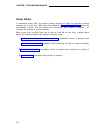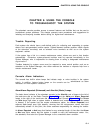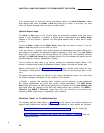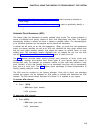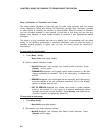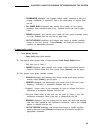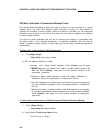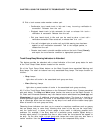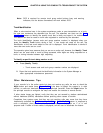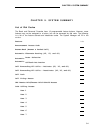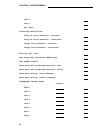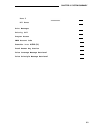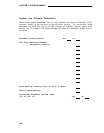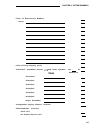
CHAPTER 8. USING THE CONSOLE TO TROUBLESHOOT
5. Dial a trunk access code member number pair.
THE SYSTEM
• Confirmation tone heard—trunk is idle and 1-way
successful. Release from the call.
• Ringback heard—trunk is idle automatic tie trunk or
verification is successful. Release from the call.
• Dial tone heard—trunk is idle and can be used to
verification successful. Place a test call, or release from
incoming—verification is
release link trunk—
place a test call—
the call.
• Your call is bridged onto an active call, and initial warning tone has been
applied to call—verification successful. Talk to the bridged parties, or
release from the call.
• Reorder tone heard—a trouble condition exists on the trunk. Press (Cancel),
and report the out-of-service condition to appropriate personnel.
Trunk Group Busy/Warning Indicators to Attendant
This feature provides the attendant with a visual indication of the trunk group status for each
of the Trunk Group Select buttons located on the console.
Six of the Trunk Group Select buttons on the Basic Console
Busy lamps. The other six buttons have only associated Busy
follows:
• Busy Lamps
Light when all trunks in the associated trunk group are
• Warn (Warning) Lamps
have associated Warning and
lamps. The lamps function as
busy.
Light when a preset number of trunks in the associated trunk group are busy.
All 12 of the Trunk Group Select buttons on the Enhanced Console have 3 lamps associated
with each button. The Busy and Warn lamps function the same as on the Basic Console. In
G1, Basic and Enhanced attendants may have feature buttons administered as (Local-tgs) and
(Remote-tgs) for up to 12 additional trunk group select buttons. The lamp on a local-tgs or
remote-tgs button lights when all trunks in its associated trunk group are busy. If the local-
tgs or remote-tgs button has two lamps, the top lamp is not used and the bottom lamp lights
when all trunks in its trunk group are busy.
Observing these indicators can alert you to unusual or suspicious conditions such as groups
that are always busy or never busy. Knowing what hours of the day are the “most busy”
and the “least busy”
in terms of trunk usage is also useful in analyzing possible trunk
problems. For example, if the Busy lamp for a particular group remains lighted during a
normally slack period, it is possible that one or more trunks are out-of-service but appear to
be busy. On the other hand, a trunk group with lamps that never light may also have a
trouble condition. Use the Busy Verification feature to test suspected faulty trunks.
8-8



